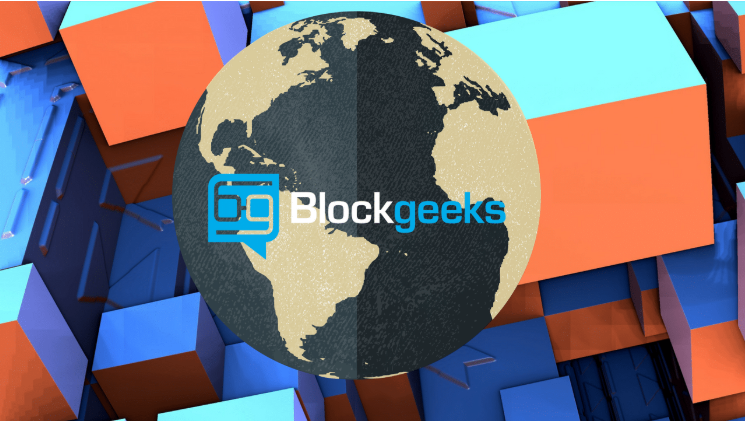4 Real World Blockchain Applications
By Laura Desmond
It will be an understatement to say that the Blockchain Technology is one of the most innovations of this century. Whenever we think of it, we automatically associate with the cryptocurrencies, and primarily bitcoin. However, that notion is changing at a rapid rate. More and more people are seeing that the decentralization and transparency that comes along with the blockchain technology has the potential to shake multiple industries to its very core. This article explores different blockchain applications.
Blockchain Applications for the Real World
Before we take a look at industries that have blockchain applications, let’s reacquaint ourselves with the blockchain technology now, shall we?
What is the Blockchain Technology?
The blockchain is a chain of blocks where each block contains data of value without any central supervision. It is cryptographically secure and immutable. A blockchain uses two important data structures: Pointers and Linked Lists.
Pointers
Pointers are variables in programming which stores the address of another variable. Usually normal variables in any programming language stores data.
Eg. int a = 10, means that there is a variable “a” which stores integer values. In this case, it is storing an integer value which is 10. This is a normal variable.
Pointers, however, instead of storing values will store addresses of other variables. Which is why they are called pointers, because they are literally pointing towards the location of other variables.
Linked Lists
A linked list is one of the most important items in data structures. This is what a linked list looks like:
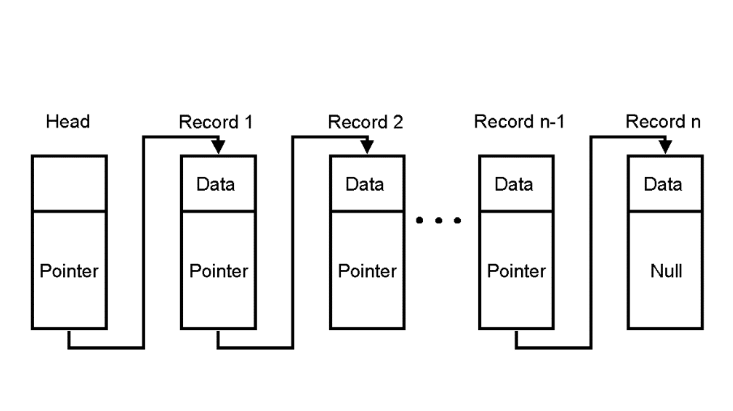
It is a sequence of blocks, each containing data which is linked to the next block via a pointer. The pointer variable, in this case, contains the address of the next node in it and hence the connection is made. The last node, as you can see, has a null pointer which means that the pointer has no value.
One important thing to note here, the pointer inside each block contains the address of the next block. That is how the pointing is achieved. Now you might be asking what does that mean for the first block in the list? Where does the pointer of the first block stay?
The first block is called the “genesis block” and its pointer lies out in the system itself. It sort of looks like this:
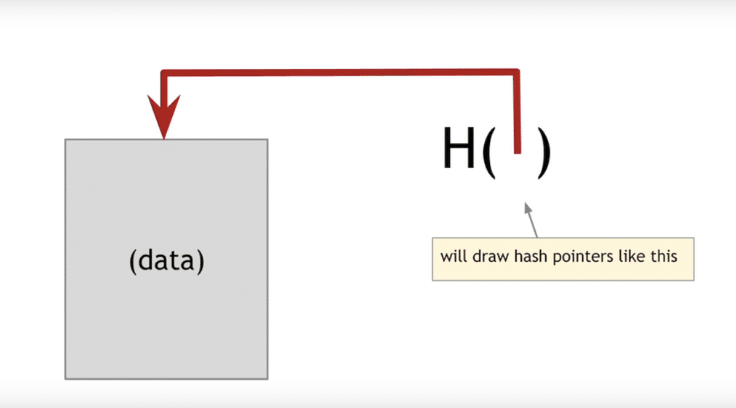
If you are wondering what the “hash pointer” means, it is a pointer which contains the hash of the previous block.
(More on hashes in a bit)
As you may have guessed by now, this is what the structure of the blockchain is based on. A blockchain is basically a linked list and looks something like this:
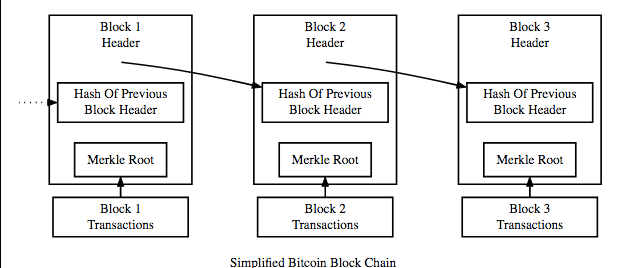
The blockchain is a linked list which contains data and a hash pointer which points to its previous block, hence creating the chain. What is a hash pointer? A hashpointer is similar to a pointer, but instead of just containing the address of the previous block it also contains the hash of the data inside the previous block. This one small tweak is what makes blockchains so amazingly reliable and trailblazing.
Remember this point because we will be back in it in a bit.
So, the two most interesting aspects of the blockchain technology are:
- Decentralization.
- Immutability.
Let’s see how it acquires both of these properties.
#1 Decentralization
A normal network structure is the “client-server” structure.
How does that work?
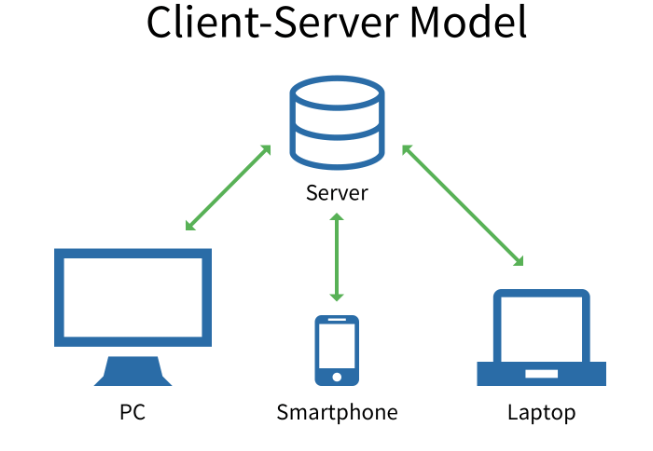
There is a centralized server. And everyone who wants to connect with the server can send a query to get the required information. This is pretty much how the internet works. When you want to Google something, you send a query to the Google server, which comes back with the required results. So, this is a client-server system. Now, what is the problem with this model?
Since everything is dependent on the server, it is critical for the server to be functioning at all times for the system to work. It is a bottleneck. Now suppose, for whatever reason the main server stops working, everyone in the network will be affected. Plus, there are also security concerns. Since the network is centralized, the server itself handles a lot of sensitive information regarding the clients. This means that anyone can hack the server and get those pieces of information. Plus, there is also the issue of censorship. What if the server decides that a particular item (movie, song, book etc.) is not agreeable and decides not to propagate it in their network?
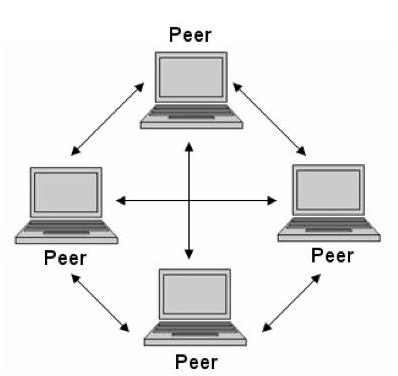
So, to counter all these issues, a different kind of network architecture came about. It is a network which partitions its entire workload among participants, who are all equally privileged, called “peers”. There is no longer one central server, now there are several distributed and decentralized peers. This is a peer-to-peer network.
Why do people use peer-to-peer network?
One of the main uses of peer-to-peer network is file sharing, also called torrenting. If you are to use a client-server model for downloading, then it is usually extremely slow and entirely dependent on the health of the server. Plus, like we said, it is prone to censorship.
However, in a peer-to-peer system, there is no central authority, and hence if even one of the peers in the network goes out of the race, you still have more peers to download from. Plus, it is not subject to the idealistic standards of a central system, hence it is not prone to censorship.
If we were to compare the two:
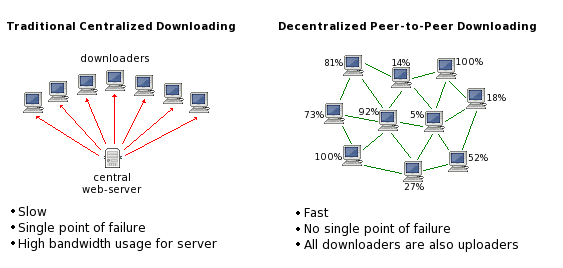
This, in a nutshell, is how the blockchain technology gains its decentralized nature.
#2 Immutability
What is immutability?
Immutability, in the context of the blockchain, means that once something has been entered into the blockchain, it cannot be tampered with. The reason why the blockchain gets this property is that of cryptographic hash function.
In simple terms, hashing means taking an input string of any length and giving out an output of a fixed length. In the context of cryptocurrencies like bitcoin, the transactions are taken as an input and run through a hashing algorithm (bitcoin uses SHA-256) which gives an output of a fixed length.
Let’s see how the hashing process works. We are going to put in certain inputs. For this exercise, we are going to use the SHA-256 (Secure Hashing Algorithm 256).

As you can see, in the case of SHA-256, no matter how big or small your input is, the output will always have a fixed 256-bits length. This becomes critical when you are dealing with a huge amount of data and transactions. So basically, instead of remembering the input data which could be huge, you can just remember the hash and keep track.
A cryptographic hash function is a special class of hash functions which has various properties making it ideal for cryptography. There are certain properties that a cryptographic hash function needs to have in order to be considered secure. You can read about those in detail in our guide on hashing.
There is just one property that we want you to focus on today. It is called the “Avalanche Effect.”
What does that mean?
Even if you make a small change in your input, the changes that will be reflected in the hash will be huge. Let’s test it out using SHA-256:

You see that? Even though you just changed the case of the first alphabet of the input, look at how much that has affected the output hash. Now, let’s go back to our previous point when we were looking at blockchain architecture. What we said was:
The blockchain is a linked list which contains data and a hash pointer which points to its previous block, hence creating the chain. What is a hash pointer? A hash pointer is similar to a pointer, but instead of just containing the address of the previous block it also contains the hash of the data inside the previous block.
This one small tweak is what makes blockchains so amazingly reliable and trailblazing.
Imagine this for a second, a hacker attacks block 3 and tries to change the data. Because of the properties of hash functions, a slight change in data will change the hash drastically. This means that any slight changes made in block 3, will change the hash which is stored in block 2, now that in turn will change the data and the hash of block 2 which will result in changes in block 1 and so on and so forth. This will completely change the chain, which is impossible. This is exactly how blockchains attain immutability.
Now that we know what the blockchain technology is, let’s look at its blockchain applications in different industries.
#1 The Food Industry -Blockchain Applications
Hmmm..not really the first thing that comes to mind when you think of “blockchain applications” now is it?
But, the fact is that many big shopping chains like Walmart are teaming up with IBM to incorporate the blockchain in their food management system.
What is the purpose of doing so?
One of the most fundamental questions that we should ask whenever we consume any food product is: “Where is my food coming from?”
More and more people are becoming increasingly indifferent as to the source of their food and this is causing a lot of problems to not only the consumers but the suppliers as well.
Back in October 6, 2006 multiple states in the US suffered a major E-Coli outbreak. The culprit? Spinach.
Around 199 people were affected of whom 22 were children under 5 years old. 31 of the 199 developed a type of kidney failure called hemolytic-uremic syndrome. Ultimately, 3 people died in the outbreak, one of whom was a 2-year-old child.
As a result of this, the entire food industry went into pandemonium. People were desperately trying to trace the source of the infected spinach. Everyone pulled spinach immediately from the market. It took the Food and Drug Administration (FDA) a total of 2 weeks to find the source of the contaminated spinach, for 2 weeks there was no spinach in the market.
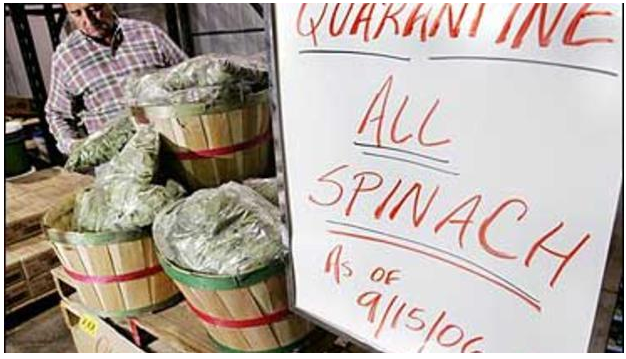
Can you guess as to what the source was?
It was one supplier. One farm. One lot.
Just that one lot closed up an entire industry for 2 weeks. For 2 weeks, farmers whose entire livelihood depended on spinach were left broke and penniless.
All this would have been avoided if there was a better way to trace the spinach.
But then this begs another question: Is “Better Traceability” really what we should be aiming for?
Is that really the best that we can do when it comes to our food?
Is traceability what we should be aiming for or is it complete transparency?
As we have already seen before, tracing food is a very slow process. It usually takes a long time, during which entire industries and livelihoods may be shut down. So what is the best way to tackle this?
What if, we were to make each and every step of the process (from the time the food grows on the farm to the time it reaches the marketplace) transparent?
So, what happens if the blockchain gets implemented here to maintain all the food records? Remember that the blockchain is an open ledger and the data in it is open to everyone and there is no central authority taking charge of the records. This greatly reduces the time that may be wasted going through endless red tape and hierarchy. In fact, having these data on the blockchain will reduce the waiting time from weeks to mere seconds.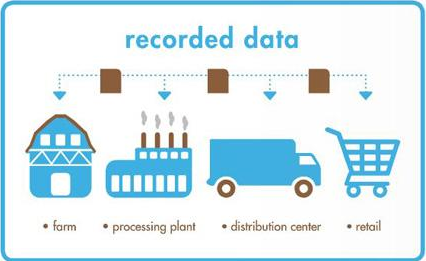
Walmart has already done two test runs with IBM, one with Chinese pork and the other with Mexican mangoes. Walmart and IBM used the “Hyperledger Fabric”, a blockchain originally built by IBM and now housed under the Linux Foundation’s Hyperledger group for these tests. Frank Yiannas, vice president of food safety at Walmart had this to say about the results of the trials (As told to Fortune):
“We were so encouraged that we really quickly started reaching out to other suppliers and retailers as well”
As the blockchain gets more and more integrated into the food industry it will make the whole process more transparent and safer. The advantages of a transparent food system are manifold (Taken from Frank Yiannas’ speech):
- Greatly enhances food safety.
- Ensures fresher food since no one will risk sending “non-fresh” food in an open system.
- There is less food waste because every single piece of food is accounted for.
- Stops food fraud because the system is open for everyone to see.
- Another advantage of an open system is that it promotes responsibility among the food producers since they now know that they can’t get away with underhand dealings.
#2 Cybersecurity -Blockchain Applications
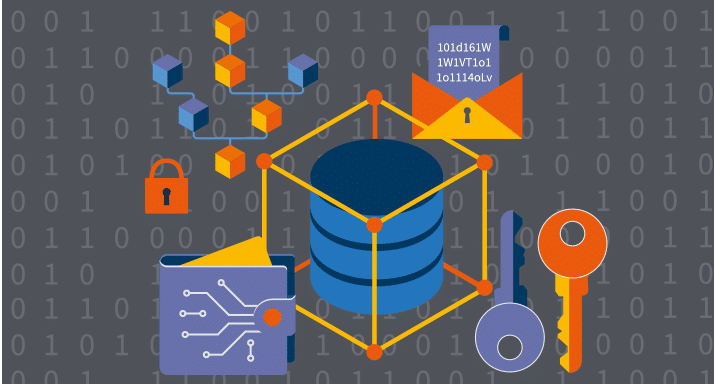
On September 7, 2017 Equifax, one of the world’s largest consumer credit reporting agency shocked the world when they revealed that they had just faced a massive cybersecurity breach. They faced unauthorized data access from mid-May through July 2017 which they discovered on July 29. Around 145.5 million were under the risk of having their personal information stolen which included:
- Names.
- Social Security Number.
- Birth Dates.
- Addresses.
- Driver’s License Numbers.
However, this was definitely not the first time that a major cybersecurity breach happened to a well-known company. Back in 2016, search engine giants “Yahoo!” faced a major attack and around one billion Yahoo accounts were compromised. Attackers were able to get the following data:
- Names.
- Passwords.
- Telephone numbers.
- Answers to security questions.
Unfortunately, this wasn’t the first instance of Yahoo getting hacked either since there are tons of DIY guides online on how to hack Yahoo. Imagine how compromised the security of a company is when there are DIY guides on how to hack that specific company floating online!
When security companies like Verizon did their research they found certain trends. Apparently, 65% of the data breaches were because of weak, default, or stolen passwords. Which is a significant number despite it being less than the previous year’s (95%). According to their research, the main reason why most of these attacks happen is that of the gullibility of the people themselves.
Time and again people fall for phishing attacks and they keep on giving away sensitive data such as usernames, passwords, and credit card details. In fact, Verizon’s report states that 23% of the people keep opening phishing email and half of them even open the attachments which come along with that!
If you want to know the true depth of this problem, then consider this. Cybercrime costs the global economy $400 billion annually.
So, now the question is, how can the blockchain help prevent these attacks?
There are mainly 3 features that a blockchain has that can help prevent cybersecurity attacks.
Feature #1: Trustless System
A blockchain system runs without the concept of “human trust”. As Derin Cag in his Richtopia article states, “It assumes that any insider or outsider can compromise the system at any moment and hence it is independent of “human ethics”.
Feature #2: Immutability
The blockchain allows one to store data and secure it using various cryptographic properties such as digital signatures and hashing. One of the best features of this is that as soon as data enters a block in a blockchain it cannot be tampered with. This is called “immutability”.
Feature #3: Decentralization & Consensus
The blockchain is a decentralized distributed system. So how does anything get done if there is no central authority? The blockchain is made of a lot of nodes. In order for any decision to be taken, the majority of the nodes need to come to a consensus and make a decision. So, instead of a central authoritative figure, we have a democratic system.
These three properties lend itself greatly to cybersecurity.
Here are some real-life examples of blockchain companies disrupting the cybersecurity space.
Example #1: Guardtime and real-time cyberattack mitigation
Guardtime is a data security startup founded by Estonian cryptographer Ahto Buldas. They have recently started putting up their sensitive data on the blockchain for the added security. Most security companies use the Public Key Infrastructure (PKI) which uses Asymmetric Cryptography and a cache of public keys. The problem, however, is that these keys are maintained by a centralized body (Certificate Authority). Since the system is centralized they are vulnerable to attacks.
So, what Guardtime is doing is that they are using the blockchain to create a KSI (Keyless Signature Infrastructure) to replace the PKI system. It has become the world’s largest blockchain company simply by revenue, headcount and actual customer deployments. In fact, in 2016 the company obtained all of Estonia’s 1 million health records using its systems.
Example #2: REMME and data protection
How is confidential data protected?
Back in the day, we had guards standing over a huge vault which stored your data for you. But obviously, there are a lot of issues with this system
- It is highly inconvenient to go all the way to the vault every time you want to access information.
- You are still depending on humans to stay honest. That’s hardly the best security model.
Then we moved on to username and passwords.
However, that is still risky because all those get saved in a centralized server and it can get hacked anytime.
So, REMME came up with the idea of making passwords completely obsolete. Each device will have its own SSL certificate, whose data will be stored on the blockchain. Since the blockchain is immutable, the data that gets stored in it can never be tampered with. That means all the devices and confidential data is safe.
Drawbacks of using blockchain in cybersecurity
According to David Treat, the lead of blockchain practice at Accenture, while blockchain is a brilliant technology it is not designed to handle massive amounts of data. Since companies like Equifax handle humongous amounts of data a blockchain may not be the best way to store it. But he added that a blockchain can be helpful in enabling individuals to exert control over their identity.
#3 Voting -Blockchain Applications
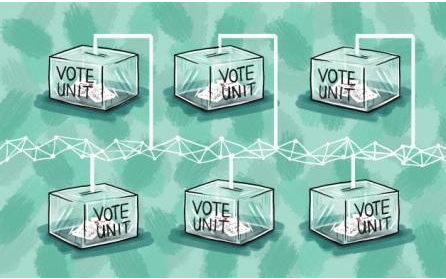
Voting is an absolutely essential tool for any democratic government. It is the most important factor that makes a government “for the people and by the people”. In fact, if it wasn’t for voting than the concept of a “free country” may not even exist. Having said that, it is really fascinating and shocking that we have still not moved on from the traditional paper ballot system of voting.
The paper ballot system has long been used by countries around the world. The concept is simple, you put your vote on a piece of paper and put it in a ballot box. At the end of the election, the votes are counted and whoever gets the most votes is the winner. However, as simple as it may sound, there are a lot of issues that can happen because of traditional paper balloting system.
The Problems with Traditional Paper Ballot System
- The system cannot be automated and is extremely tedious. From actually physically going to the venues where the ballot boxes are kept to waiting in long lines. The entire process is extremely time-consuming.
- The amount of time taken to count the votes is too high.
- The election can be hijacked via the insertion of bogus ballot papers.
- More powerful parties can use intimidation tactics on the venues to rig the election in a certain way.
- The amount of paper wastage can cause harm to the environment.
- There is no historical record possible to keep track of each and every vote made.
- The cost of expenditure on paper ballots is very high.
- It is impossible to keep track of your vote.
- Once you have cast a vote you cannot change it.
So as you can see, there are a lot of disadvantages of a paper ballot system. To counter this a digital voting system was employed by countries like Estonia. As The Economist reports, Estonia has had electronic voting since 2005. In fact, during the 2015 parliamentary elections, 30.5% of the votes were done digitally.
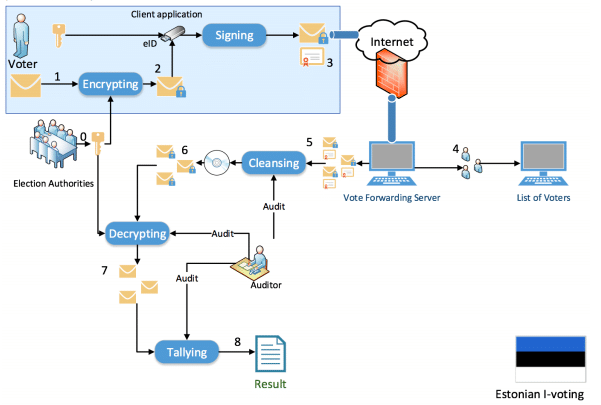
However, there were some possible issues in the system that were pointed out (data taken from The Economist).
- Firstly, the client side machine could develop a malware which reads each and every vote cast and changes the vote to the other candidate.
- An attacker can directly infect the servers through malware placed on the DVDs used to set up the servers and transfer the votes.
While these issues were criticized and contested by the Estonian Information Systems Authority, the fact remains that having a centralized server taking care of the votes can be susceptible to multiple attacks and hacks.
The Blockchain Solution
Companies like “Follow My Vote” are using the blockchain technology and Elliptical Curve Cryptography to bring voting to the 21st century. Their goal is simple, make the election process as transparent as possible. What exactly happens to your votes after you cast it? Hardly anyone knows that. So, how is integrating blockchain technology going to fix this?
This is what Follow My Vote is planning to do. Any potential voter can securely login using their webcam and government issued ID. After they are done the voting, anyone can use their voting ID to track their votes and check that it has been cast correctly. On top of that. They even give their voters the ability to change their votes any number of times till the deadline.
They use Elliptical Curve Cryptography (ECC) to create these votes. ECC is a form of asymmetric cryptography. Asymmetric cryptography uses two keys (a public key and a private key) to encrypt and decrypt data. ECC is basically what bitcoin and ethereum use for their cryptography. One thing to note, the private key should not be revealed to anyone but the user and the public key generates a public address which is shared with everyone.
So how do Follow My Vote use this technology to create their votes?
During Voter Registration, the voter creates two ECC key-pairs. The voter reveals their identity to a verifier who certifies the first key pair. Once that is done, the voter registers their second key pair anonymously as belonging to the first pair. The first key-pair is called “identity key-pair” while the second is called “voting key-pair”.
The voter can then create a transaction which is basically their vote and sign them off with their voting private key. Once the vote is done, anyone can verify whether the signature is valid or not and make sure that none of the votes have been tampered with. They can simply verify using the voter’s public key to check whether it is indeed the voter who did the voting or not.
#4 Land Registry
India has looked into the blockchain technology as a possible solution to their land registry problems. Property fraud is one of the biggest issues in India.
Consider this for a second.
In 2013, New Delhi alone had 181 reported cases of property fraud while Mumbai came a close second at 173 cases. So, to counter this issue, the governments of Andhra Pradesh and Telangana have partnered up with Swedish startup ChromaWay to put their land registry on the blockchain.
The execution is going to be extremely straightforward.
The system will have a blockchain back-end and a web app front-end. The front-end will aid in the overall system abstraction. ChromaWay will be using their own database platform called “Postchain.”
As per International Business Times: “Postchain is built from the ground up to work with most widely-used platforms, and integrating it into the government’s systems is done seamlessly.”
One of the many interesting innovations that they possibly could be doing is the introduction of cryptographically secure, digital fingerprints.
This is how it can possibly work:
- A hash is taken of the geo-coordinates along with a polygonial description of the land.
- This hash is tied to the owner’s ID and the result is hashed again and added to the blockchain.
- Since the hash is always a unique value, everyone will have a unique ID. Plus, because of the blockchain’s immutability, no one can tamper with the records.
J A Chowdary, Special Chief Secretary & IT advisor to Andhra Pradesh CM N. Chandrababu Naidu had this to say about this innovation,
“Blockchain is the technology of the future. It will not only change the way we perceive processes but it also has the potential to transform the economy. Of course, we all are yet to fully discover this technology and hence the Government of Andhra Pradesh has engaged with startups from across the globe such as ChromaWay to run proofs of concept within its own departments. ChromaWay’s expertise and previous implementation in countries such as Sweden have added immense value to our understanding of blockchain.”
Conclusion
As you can see, there are many more blockchain applications than just cryptocurrency and can affect way more sectors than just the finance sector. We deliberately avoided showing the blockchain’s impact on the banking sector to keep the list as non-fintech as possible. We hope that this guide will educate you and inspire you about the possibilities of this wonderful and disruptive technology.

